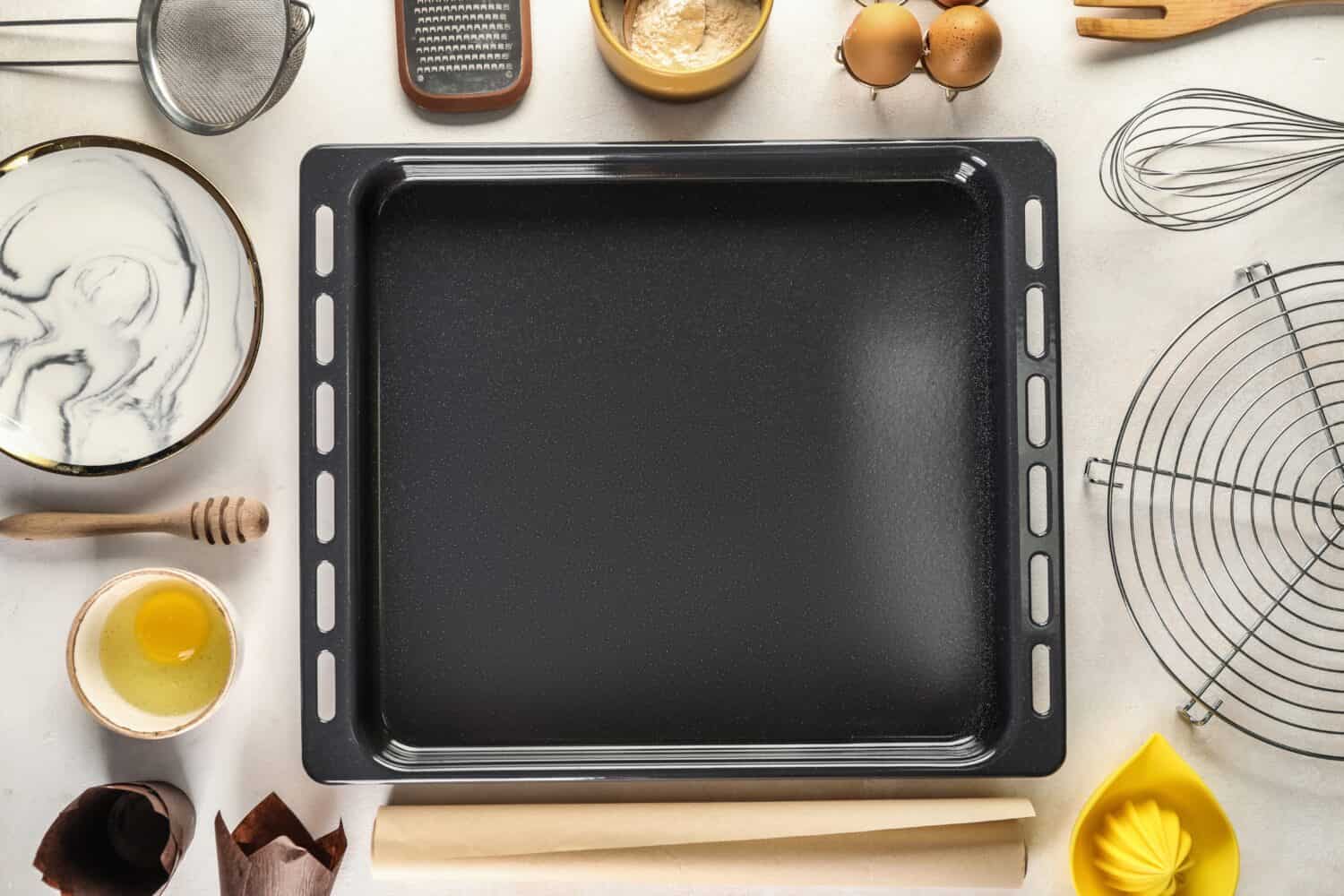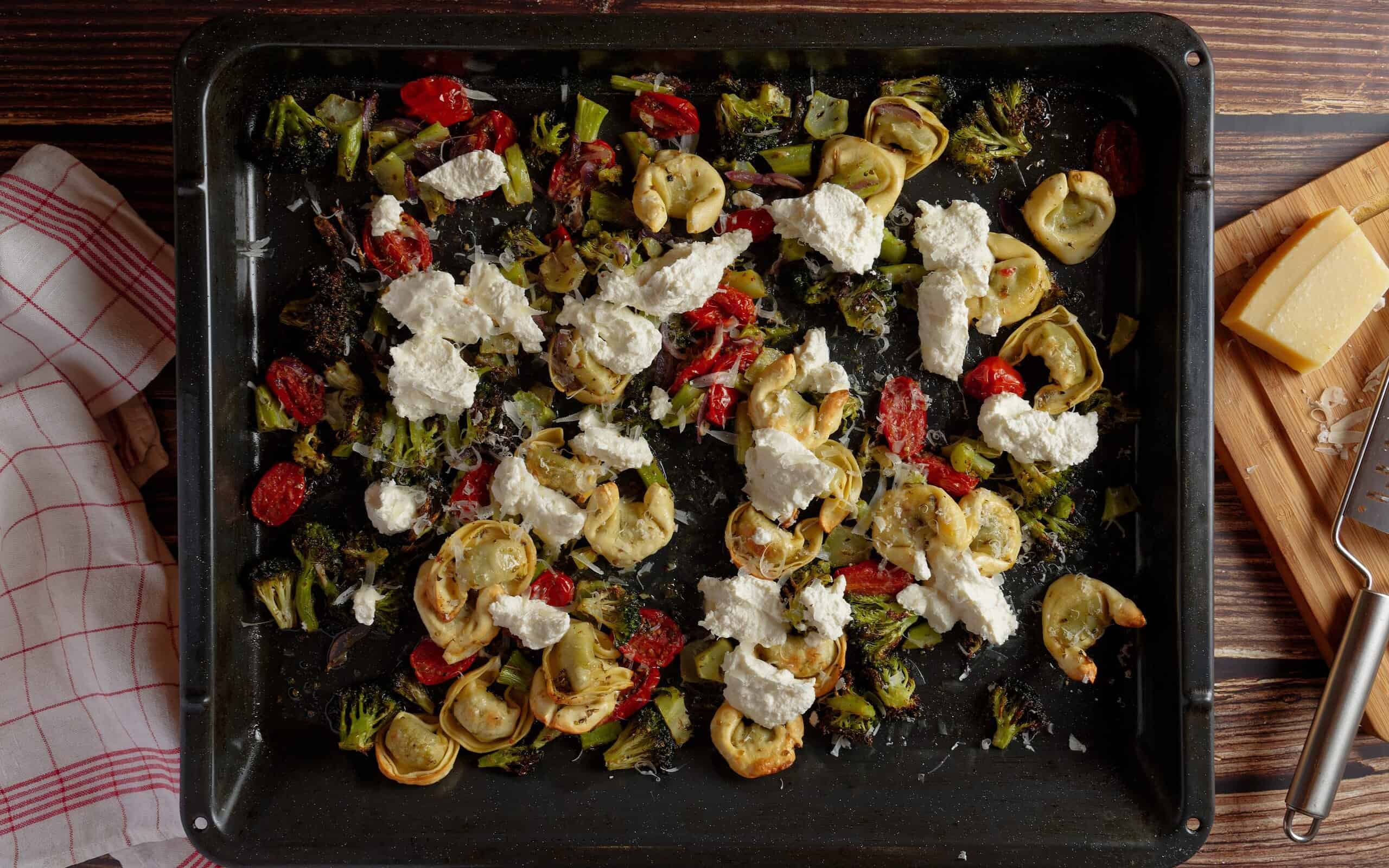

















Sheet Pan Meals: What They Are, How to Make Them
Over the past couple of years, sheet pan meals have become quite popular. A sheet pan puts the idea of a one-pot dinner or dessert onto a pan. It doesn’t require special ingredients or costly equipment. The bonus about a sheet pan meal is that it saves time and makes cleanup a breeze without the use of multiple pots and pans. Simply begin by adding your choice of vegetables, protein, oil, and seasonings. Then roast over high heat until everything is a lovely golden brown color. In this guide, we will discover what sheet pan meals are and how to make them.
What Are Sheet Pan Meals?
A sheet pan meal is a complete meal consisting of vegetables, starches, and protein cooked together in a hot oven on a single sheet pan. Sheet pans are convenient for cooking all your desired ingredients at the same time with minimal mess. When it comes to sheet pan meals, the recipes are endless and simple enough to customize to your tastebuds. Meals can be prepared within an hour, and they are usually low in fat. Sheet pans are full of potential and can be used for breakfast, appetizers, main meals, and even desserts. They are also ideal for cooking ingredients in different sections, for example, meat on one side and vegetables on the other.
What To Look for When Buying a Sheet Pan?
A light-colored, silver-grey aluminum sheet pan is best for heat conduction. Darker sheet pans bake foods faster. This is because dark colors get absorbed by the heat quickly. Think about it this way: It’s a scorching hot summer day, and you are at your friend's BBQ. Your friend is wearing a white T-shirt, and you are wearing a black T-shirt. As you boil in the sun in the black T-shirt, your friend is probably feeling much cooler in their white T-shirt. There is no difference when it comes to baking.
Most sheet pans are called half sheet baking pans and are typically the same size (18 x 13 inches). This is because they fit in a standard-size oven. A popular brand is Nordic Ware Natural Aluminum Commercial Baker’s Half Sheet. This product is perfect for sheet pan dinners, savory and sweet baking, as well as cookies and cakes. The all-natural aluminum sheet pan works well with silicone baking mats, shortening, butter, oil, and parchment paper. Furthermore, it will not rust or warp.
How to Make Sheet Pan Meals
It is quite simple to make sheet pan meals. Use this guide for approximate cooking times. Most proteins cook in 30 minutes or less at 425°F. Keep in mind that bone-in meats do take longer to cook. Fish cooks the quickest, and shrimp take a few minutes. You can use up to two pounds of protein for each half sheet pan. Vegetables shrink and lose water when they roast. As a rule, to fill a sheet pan, you would use 2-3 cups of chopped vegetables. For even cooking, cut them all the same size.
- Whole sausage: approximately 25 minutes
- Shrimp: 3–10 minutes, depending on the size
- Chicken, boneless or bone-in: 20–25 minutes
- White fish and salmon: 12–12 minutes, depending on the thickness
- Lamb chops: depending on the thickness 10-20 minutes
- Tofu: 20 minutes
- Potatoes: 25–30 minutes, cut into wedges and small pieces
- Leafy vegetables: 10–20 minutes
- Root vegetables: 30 minutes
- Cabbage: 15–30 minutes, depending on how it has been cut
- Onions: 15-20 minutes, cut into thick slices or wedges
- Soft squash: 15-20 minutes
- Cherry tomatoes: until bursting, 20–25 minutes
- Cauliflower, broccoli, Brussels sprouts: 25–30 minutes
- Hard squash: 30 minutes cut into pieces
Select Ingredients
First, choose your desired ingredients: protein, starch, vegetables, fat, herbs, and spices. Next, take a look at the estimated cooking time of the ingredients you have chosen. Some may be cooked at the same time. However, others may need a head start, and the rest can be added later. For example, if you are cooking chicken, potatoes, and mushrooms, then give the chicken and potatoes a 15-20 minute head start, then add the mushrooms. Additionally, shellfish cooks relatively quickly, so start the vegetables first and then add the shellfish.
Prepare the Ingredients
Next, you want to prepare all the ingredients. Chop the vegetables and meat into bite-sized pieces. As mentioned before, for even cooking, cut the pieces to the same size. Then, season the meat and vegetables with your choice of herbs, spices, or marinade. Additionally, if you are using a sauce that contains sugar, like sweet and sour, BBQ, or anything with balsamic vinegar, to prevent burning, it is best to add it in the last few minutes.
Assemble the Sheet Pan Meal
Right now that you have prepared your ingredients, you need to spread them out, allowing enough space between each piece. This way, you avoid overcrowding the sheet pan, and all the ingredients can cook evenly. The steam can escape and prevent the food from going soggy.
Additional Seasoning
If you feel that your sheet pan meal needs any additional seasoning, now is the time to add it. Sprinkle fresh herbs, paprika, garlic powder, salt, pepper, red chili flakes, or parmesan cheese.
Cooking and Serving
Place your sheet pan in a preheated oven and cook according to the recipe directions. Finally, once the sheet pan meal has cooked, using oven gloves, take it out of the oven and allow it to cool slightly before serving. Serve and enjoy with your choice of side dishes. For example, tahini, fresh ciabatta bread, avocado slices, tzatziki, or hummus.